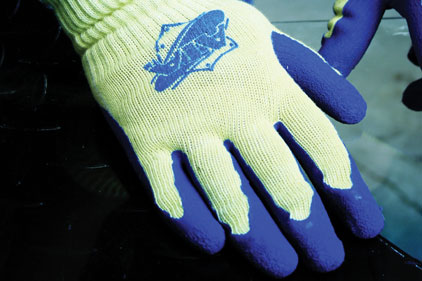A common & costly mistake
Imagine this……
You are standing in the aisle at one of the “big box” hardware stores in your hometown. The water heater in your home has just sprung a leak and your beautifully refinished basement/man-cave has become victim to gallons of scalding hot water. That nice new carpet you laid down last year is now a soggy mess and your decision to put off replacing that old worn out water heater has come back to bite you in the proverbial behind.
Being a hardworking citizen, cost is a factor, and you are not looking to spend this month’s paycheck on a new hot water tank. You eye up the first one you see, look at the price tag and see that it’s within your budget and start hauling the box onto your cart. You ignore the complimentary signs and books located close by that are designed to aid you in selecting your new water tank.
One of the “helpful” store associates sees you struggling with the box and offers to lend you a hand. The associate asks “Are you certain you made the right selection for your home?” You answer, “Yes, I just need a new hot water tank, any one of these will be fine, and I’m on a tight budget,” and away you go to the register.
It is in this moment that you have made a very common (and usually very costly) error; you have decided that any old water heater will work just fine in your house. (By choosing the least expensive one on the shelf, you have assumed, “they all work the same.”)
You neglected to take into account the fact that your home is 2,200 sq. ft and you have four children and a wife who all seem to require an hour-long soak in the shower at the same time. Nevertheless, you load the brand new, 20-gallon, economy-grade water tank, which is really only suitable for a small apartment, onto the back of your pickup truck and you head home feeling good about your purchase.
All gloves are not the same
Now take a look at your hands and imagine yourself as an industrial specialist. Every day you are running those hands across a razor sharp piece of unfinished plate glass, or maneuvering stamped steel in position on an assembly line, or working with slag in a steel foundry — would you want the person who selected the gloves that are protecting your hands to have made his decision in a similar fashion as the guy buying his new hot water tank?
Imagine the decision has been made that plain old cotton string knit gloves will work just fine for handling those glass solar panels, or that a cut and sewn leather glove will offer you the same protection as an aluminized para-aramid safety glove while working around 2000˚F molten slag.
Imagine the glove you are wearing to protect one of your most vital occupational assets was chosen because “a glove is a glove is a glove.”
A mistake like this at home means a flooded basement. A mistake like this on the job means lacerations and lost time; not to mention how costly it is to the company and to the injured employee, who was not wearing the correct hand protection for his or her particular job.
Now we all certainly hope that no one in our industry is as clueless about hand protection as the person described above; however the “wrong glove for that job syndrome” is more prevalent than one might think and is certainly not something to be taken lightly.
Pay attention to the details
In this day and age, most users have become highly educated in existing glove technologies, and any profitable company realizes that a cotton or leather glove does not provide adequate protection for every job. What many end users may not realize is that more and more glove manufacturers are focusing on application-specific hand protection solutions, rather than broad-based “one size fits most” designs.
The glove industry is doing more and more to provide solutions that meet very specific criteria. Innovation and technology have shown us that what works in one automobile plant in the welding department, may not be the correct type of glove for a different automobile plant’s stamping operation and vice versa.
A 20-gallon hot water tank will never keep a family of five happy with enough warm water in the morning, and the same correlation holds true for hand protection. Entire niches are being carved out within the industry, focusing on job-specific hand protection that has in turn acted as a much needed catalyst to improving workplace safety.
Traditionally, politics and unit cost sometimes played a large role in hand protection selection criteria; however the glove industry has evolved over time to allow for effective solutions to be very cost-effective and very application specific.
The development focus has not solely been on the actual job that is taking place, but also on the reported and recordable injuries that have occurred in the past in that particular application. This information is effectively used to design and structure more effective glove styles that help reduce instances of worker hand injuries and increase production and profitability.
For instance, injuries classified as lacerations or cuts are very commonly misinterpreted as product failure. Research and development has shown that, in many cases, it can be either a tear or an abrasion that has caused the failure in said product, which contributed to the laceration injury. With this knowledge, glove manufacturers can aid end users in tailoring a glove that fits their needs and offers the best protection from the hazards present in that particular job.
Work closely with your partners to get the right solution for your application. Understand the protection level needed for your employees, pay attention to the details and demand that your hand protection supplier does the same. Protect those hardworking hands of America correctly — and see why the right glove for the right job is so important.



